Class 9 Civics Chapter 2 Notes - Constitutional Design
| Table of contents |

|
| Introduction |

|
| Democratic Constitution in South Africa |

|
| Why do we need a Constitution? |

|
| Making of the Indian Constitution |

|
| Guiding Values of the Indian Constitution |

|
| Difficult Words |

|
Introduction
Constitutional design refers to the process of creating a constitution that outlines the framework for governance in a country.
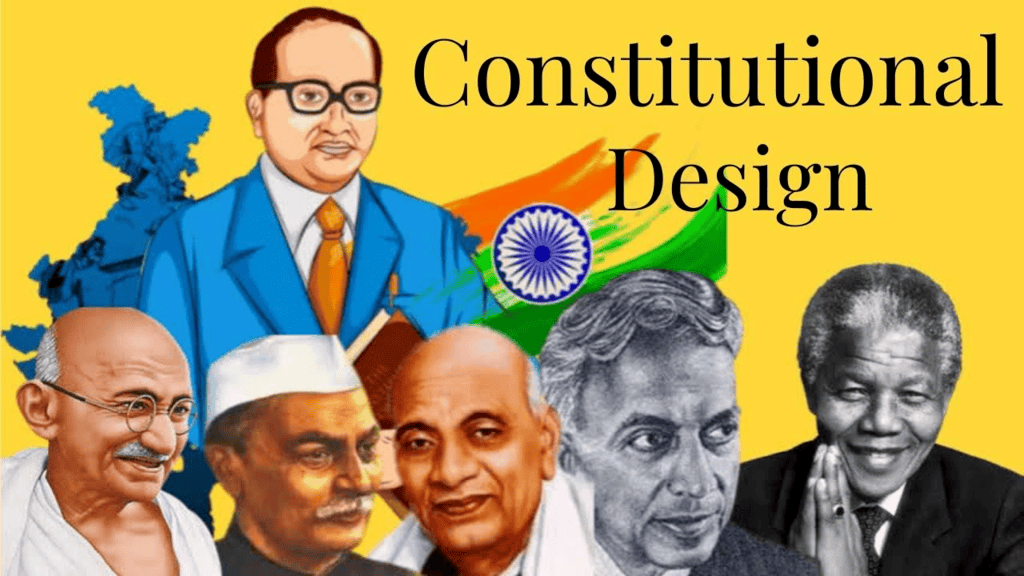
- These rules are not just for the people but for the government as well.
- They form the constitution, which is the foundation of every democracy.
- In this chapter, Constitutional Design, we explore why constitutions are essential and how they come into existence.
- We will dive into questions like who creates these constitutions, what values they represent, and how they can adapt to changing times.
- Through the example of South Africa's journey to democracy, we will see how constitutions can transform nations.
- Finally, we'll turn our attention to the making of the Indian Constitution and its guiding principles that shape the lives of citizens and the functioning of the government.
Democratic Constitution in South Africa
- South Africa is a country located in the southern tip of Africa. It has a rich and diverse culture.
- It consisted of 3 major groups whites, blacks and colored.
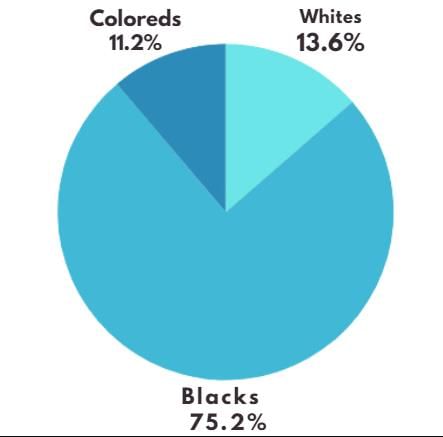 Population of South AfricaNow as you can see from this diagram. There were very less white people in South Africa. They were a minority there. However, for a long time, South Africa was ruled by a minority white government that practiced a policy of discrimination and oppression on the basis of race. This policy was called apartheid.
Population of South AfricaNow as you can see from this diagram. There were very less white people in South Africa. They were a minority there. However, for a long time, South Africa was ruled by a minority white government that practiced a policy of discrimination and oppression on the basis of race. This policy was called apartheid.
- Mandela's Quote: Fought against white and black domination, cherished ideal of a democratic and free society, harmony, equal opportunities, willing to die for ideals.
- Trial and Imprisonment: Tried for treason by white South African government, sentenced to life imprisonment in 1964, opposed apartheid regime.
- Robben Island: Spent 27 years in South Africa’s most dreaded prison, endured harsh conditions, remained committed to ideals.
Struggle Against Apartheid
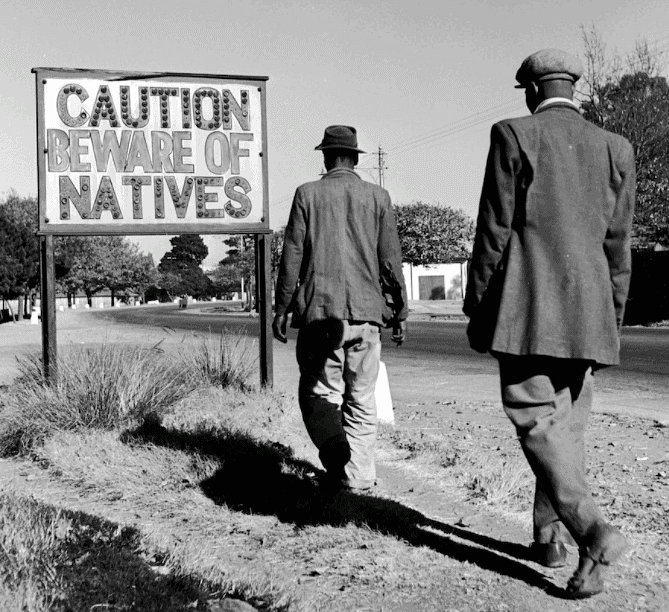 Signs of Apartheid
Signs of Apartheid
- Nelson Mandela was a key figure in South Africa’s fight against racial segregation, known as Apartheid.
- He was jailed for 28 years (1964-1992) for his opposition to the Apartheid government.
- After his release, Mandela became South Africa’s first black President.
- Blacks, coloured, and Indians fought against apartheid through protests, marches, and strikes; African National Congress (ANC) led the struggle, included workers' unions, Communist Party, and supportive whites.
- The South African people, of all colors, stood against the Apartheid laws set by the white minority.
- By the 1980s, these laws began to be taken apart, leading to change.
- In 1994, South Africa had its first election where everyone could vote, regardless of race.
- The new constitution focused on healing from past struggles and bringing people together.
- It set out to make South Africa a place of fairness, freedom, and respect for everyone.
- Several countries denounced apartheid as unjust and racist, but the white racist government continued oppressive rule by detaining, torturing, and killing thousands of black and coloured people.
The main features of this policy were as follows:
- All people were classified and separated on the basis of race.
- Each group had to live in a separate area.
- There were separate schools and universities, separate shopping centers, and separate coaches in trains.
- Marriage between persons belonging to two races was a criminal offense.
- There was a restriction on movement from one place to another.
- Non-whites had no votes. They had no say in the governance of the country.
- In short, the policy of apartheid denied human rights and rendered the government of South Africa among the most oppressive regimes in the world in the 20th century.
Towards a New Constitution
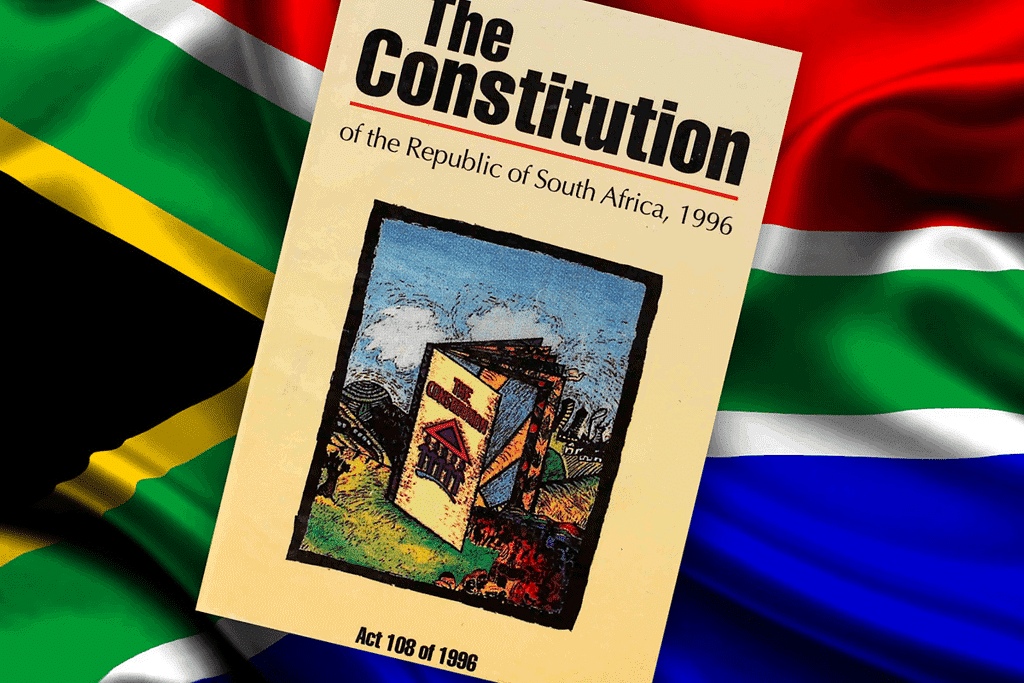
- The whites that oppressed people and the group fighting for freedom that were the black, worked together to create a new constitution.
- This constitution is considered one of the best in the world.
- It offers its people more rights than any other country’s constitution.
- The constitution states that everyone should be included in solving problems, without blaming or excluding anyone.
- It suggests that everyone has a role in making things better, no matter their past actions or beliefs.
- The South African constitution is a source of inspiration for people who believe in democracy around the world.
- South Africa has transformed from being known as undemocratic to being a role model for democracy.
Nelson Mandela - Gandhi of South Africa 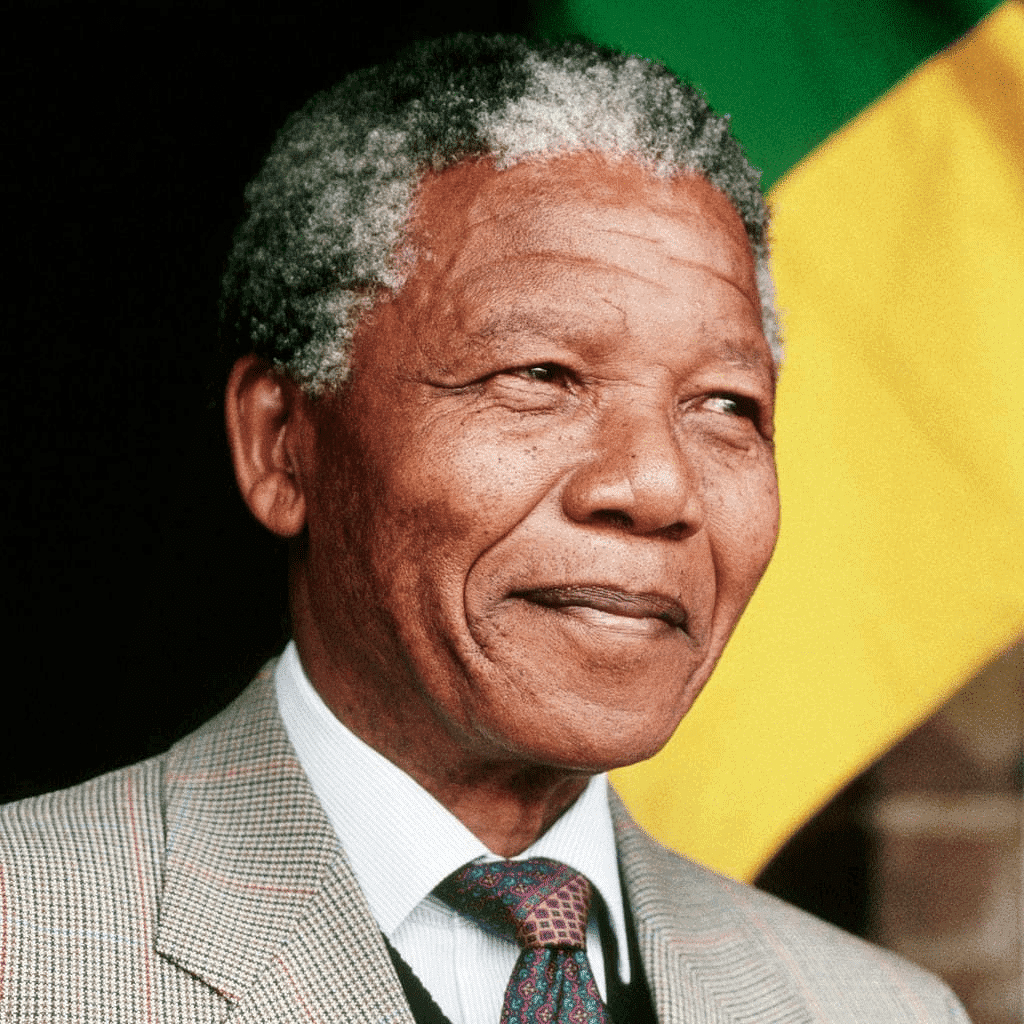 Nelson Mandela
Nelson Mandela
- Nelson Mandela was an influential leader of the African National Congress.
- Under his leadership, the fight against Apartheid reached its peak.
- He was imprisoned for life in 1964 for his anti-Apartheid activities but spent 28 years in jail.
- In the 1990s, the African National Congress’s efforts and international support led to South Africa’s isolation.
- Mandela was released in 1990 to help improve the situation.
- Policy Changes: White regime repealed discriminatory laws, lifted bans on political parties and media restrictions; Nelson Mandela was freed after 28 years in prison.
- New Democracy: On 26 April 1994, South Africa's new national flag was unfurled, marking the end of apartheid and the birth of a multi-racial democracy.
- South Africa held its first democratic elections in 1999.
- Nelson Mandela was elected as the President of South Africa.
- Call for Forgiveness: Black leaders appealed to forgive the atrocities of the past and build a new South Africa based on equality, democratic values, social justice, and human rights.
- Collaborative Constitution: After two years of discussion, the former oppressors and freedom fighters created one of the finest constitutions, ensuring extensive rights for all citizens.
- Global Inspiration: The South African Constitution, once denounced globally, is now seen as a model of democracy, emphasizing unity and transformation from a painful past into a shared future.
Why do we need a Constitution?
- A Constitution is a set of written rules agreed upon by everyone in a country.
- It is the supreme law that defines how citizens relate to each other and to the government.
- The constitution serves several purposes:
- It builds trust and coordination among diverse people.
- It outlines the structure of the government and decision-making powers.
- It sets boundaries on government power and lists citizens’ rights.
- It reflects the people’s desire for a just and good society.
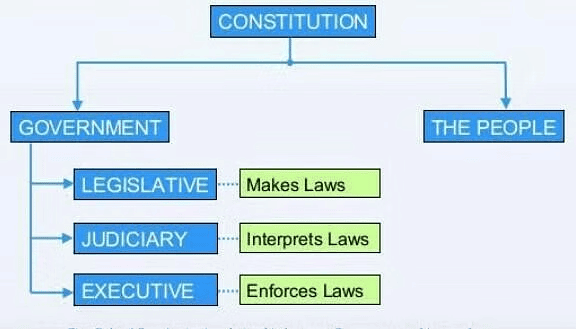
- The U.S. and French Constitutions arose after their respective revolutions and wars, establishing democratic governance.
- Most democratic countries have constitutions, and even non-democratic countries require basic rules for governance.
Constitutions serve as the supreme law that governs the relationship between people and their government.
Making of the Indian Constitution
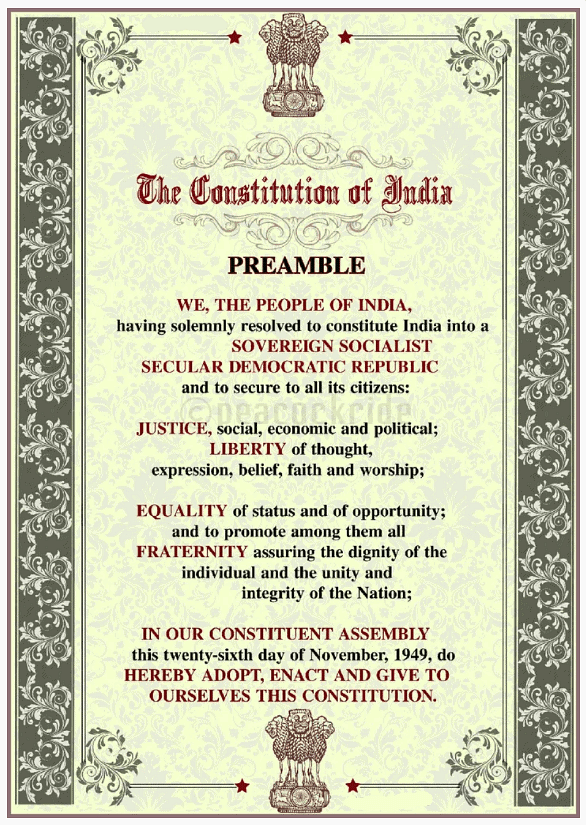 Preamble of the Indian Constitution
Preamble of the Indian Constitution- The making of the constitution for a huge and diverse country like India was not an easy affair.
- The people of India were emerging from the status of subjects to that of citizens.
- The country was born through a partition on the basis of religious differences. At Least ten lakh people were killed on both sides of the border in partition-related violence.
- The British had left it to the rulers of the princely states to decide whether they wanted to merge with India or with Pakistan or remain independent. The merger of these princely states was a difficult and uncertain task.
- When the Constitution was being written, the makers of the Constitution had anxieties about the present and the future of the country.
The Path to Constitution
- Existing Consensus: Unlike South Africa, India already had a broad agreement on democratic principles before drafting the Constitution.
- Foundational Documents: Key documents, like the 1928 Motilal Nehru draft and the 1931 Karachi resolution, laid the groundwork for universal adult franchise and minority rights.
- Colonial Experience: The experience with British legislative institutions, especially the 1937 Provincial Legislature elections, helped shape India's own governance structures.
- Global Inspiration: Indian leaders were influenced by global ideals like the French Revolution and U.S. Bill of Rights but adapted them to suit India's unique needs.
- Thoughtful Adaptation: Years of deliberation ensured that the Constitution was not a mere imitation but a well-considered document tailored for India.
The Constituent Assembly
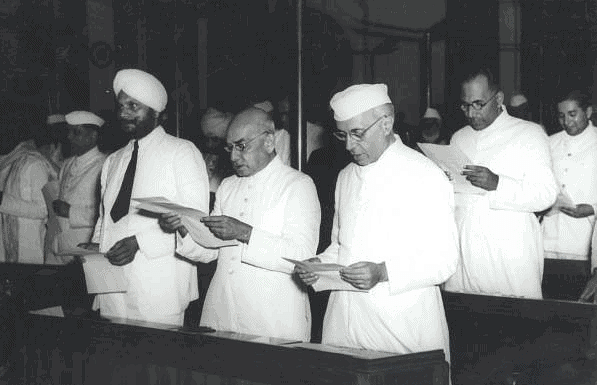 First Constituent Assembly
First Constituent Assembly
- The Constitution of India was framed by a Constituent Assembly set up under the Cabinet Mission Plan, of 1946.
- The assembly consisted of 389 members representing provinces (292), states (93), the chief commissioner provinces (3) and Baluchistan (1).
- Formation: The Constituent Assembly was formed to draft the Indian Constitution. Elections were held in July 1946, and its first meeting was in December 1946.
- The assembly held its first meeting on December 6, 1946. It elected Dr. Rajendra Prasad as its Chairman. Soon after the country was divided into India and Pakistan.
- The Constituent Assembly was also divided into the Constituent Assembly of India and that of Pakistan. The Constituent Assembly that wrote the Indian Constitution had 299 members.
- The Assembly adopted the Constitution on 26 November 1949 but it came into effect on January 26, 1950. To mark this day we celebrate January 26 as Republic Day every year.
Why should we accept the Constitution made by the Constituent Assembly more than 50 years ago?
- The Indian Constitution represents the collective agreement of many people at the time, not just a few individuals.
- It has been respected and upheld, unlike some countries that had to completely rewrite their constitutions.
- No significant group or political party has ever questioned the legitimacy of the Constitution itself, which is quite remarkable.
- The Constituent Assembly was not directly elected by all citizens due to the absence of universal suffrage but was elected by members of the Provincial Legislatures.
- This ensured a diverse representation from various regions, languages, castes, classes, religions, and occupations.
- The assembly worked in an orderly and transparent manner, agreeing on fundamental principles.
- A committee headed by Dr. B.R. Ambedkar was responsible for drafting the Constitution.
- They meticulously discussed the draft, considering over two thousand amendments.
- The discussions were meticulously documented in the ‘Constituent Assembly Debates,’ which span 12 volumes.
- These debates provide detailed explanations for each part of the Constitution and assist in its interpretation.
Guiding Values of the Indian Constitution
The Dream and the Promise
There were many members who followed the vision of Mahatma Gandhi. This dream of an India that has eliminated inequality was shared by Dr. Ambedkar, who played a key role in the making of the Constitution, but his vision of removing inequalities from India was different from Gandhiji's.

Philosophy of the Constitution
Values that inspired and guided the freedom struggle and were in turn nurtured by it, formed the foundation for India’s democracy. Given below are the values embedded in the Preamble of the Indian Constitution.
- We, the People of India: The Constitution has been drawn up and enacted by the people through their representatives, and not handed down to them by a king or any outside powers.
- Sovereign: People have the supreme right to make decisions on internal as well as external matters. No external power can dictate the Government of India.
- Socialist: Wealth is generated socially and should be shared equally by society. The government should regulate the ownership of land and industry to reduce socio-economic inequalities.
- Secular: Citizens have complete freedom to follow any religion. But there is no official religion. The government treats all religious beliefs and practices with equal respect.
- Democratic: A form of government where people enjoy equal political rights, elect their rulers and hold them accountable. The government is run according to some basic rules.
- Republic: The head of the state is an elected person and not a hereditary position.
- Justice: Citizens cannot be discriminated against on the grounds of caste, religion and gender. Social inequalities have to be reduced. The government should work for the welfare of all, especially of the disadvantaged groups.
- Liberty: There are no unreasonable restrictions on the citizens in what they think, how they wish to express their thoughts, and the way they wish to follow up their thoughts in action.
- Equality: All are equal before the law. The traditional social inequalities have to be ended. The government should ensure equal opportunity for all.
- Fraternity: All of us should behave as if we are members of the same family. No one should treat a fellow citizen as inferior.
Institutional Design
- The makers of the Indian Constitution wanted it to reflect the people’s hopes and societal changes.
- They didn’t view the Constitution as something that couldn’t be changed, so they allowed for amendments.
- 104 amendments have been made to the Constitution so far.
The process for making amendments is divided into three categories:
(i) First category: Amendments need a simple majority in Parliament and the President’s approval.
(ii) Second category: Amendments need a special majority—two-thirds of Parliament members present and voting—followed by the President’s assent.
(iii) Third category: These amendments are tough to pass. They require the special majority plus approval from at least 50% of the state legislatures.
Difficult Words
Apartheid: A policy or system of segregation or discrimination on grounds of race, which was formerly practiced in South Africa against non-white citizens.
Constituent Assembly: A body composed of members elected to draft or adopt a new constitution or reform an existing one.
Universal Adult Suffrage: The right of citizens in a given society who are entitled to vote in an election to do so; typically, this term refers to all adults, without regard to race, sex, belief, or social status.
Preamble: An introductory statement in a document that explains the document's purpose and underlying philosophy.
Sovereign: Possessing supreme or ultimate power. In the context of a country, it means independent and having the right to govern itself.
Secular: The principle of separation of the government from religious institutions.
Socialist: In the context of the Indian Constitution, it refers to an economic system where the government or the public as a whole has ownership and control of the means of production and distribution of goods.
Republic: A state in which supreme power is held by the people and their elected representatives, and which has an elected or nominated president rather than a monarch.
Fraternity: A group of people sharing a common profession or interests, which in the context of the constitution, reflects a sense of brotherhood and mutual support within a society.
Amendments: Changes or additions that are made to a constitution or a law.
Bill of Rights: A formal declaration of the legal and civil rights of the citizens of any state, country, federation, etc.
Judiciary: The judicial authorities of a country; the system of courts that interprets and applies the law in legal cases.
Multi-party System: A system of government in which multiple political parties have the capacity to gain control of government offices, independently or in coalition.
Parliamentary Democracy: A form of government in which the executive derives its legitimacy from its ability to command the support of the legislature, typically a parliament, to which it is accountable.
Constitutional Monarchy: A system of government in which a monarch (king or queen) acts as the Head of State within the parameters of a constitution.
|
53 videos|437 docs|80 tests
|
FAQs on Class 9 Civics Chapter 2 Notes - Constitutional Design
| 1. What is the significance of a democratic constitution in South Africa? |  |
| 2. Why is a constitution essential for a country? |  |
| 3. What were the key influences in the making of the Indian Constitution? |  |
| 4. What are the guiding values of the Indian Constitution? |  |
| 5. What are some difficult words related to constitutional design and their meanings? |  |

|
Explore Courses for Class 9 exam
|

|


















